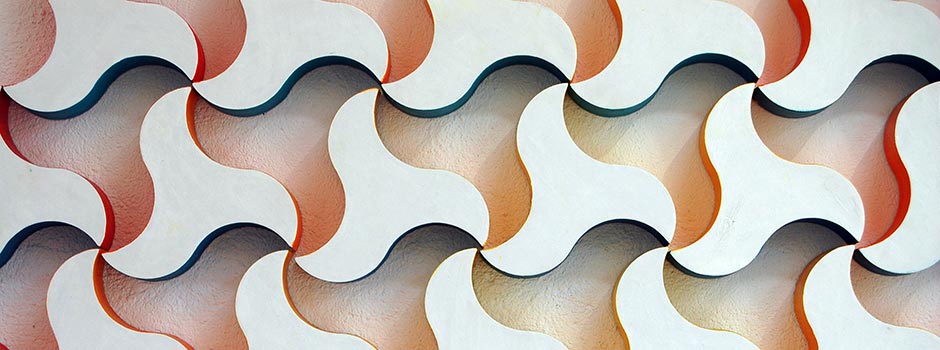
AN INTERVIEW WITH BRITISH ARTIST ZARAH HUSSAIN Islamic Art with a Modern Twist
Dec 20, 2013 Interview

Zarah Hussain’s work revolves around Islamic geometry and tessellating pattern. The British artist received traditional training at the Visual Islamic and Traditional Art (VITA) program at the Prince's School for Traditional Arts in London where she obtained her Master’s degree. If her art remains faithful to the structure and spirituality of classical Islamic art, it nonetheless possesses a modern twist. In fact, Hussain is a multimedia artist who paints, sculpts, and also does digital animation and public art. Based in London, she has had several one-woman exhibits and is presently preparing for a solo show to open at the Birmingham Museum and Art Gallery in May 2014.
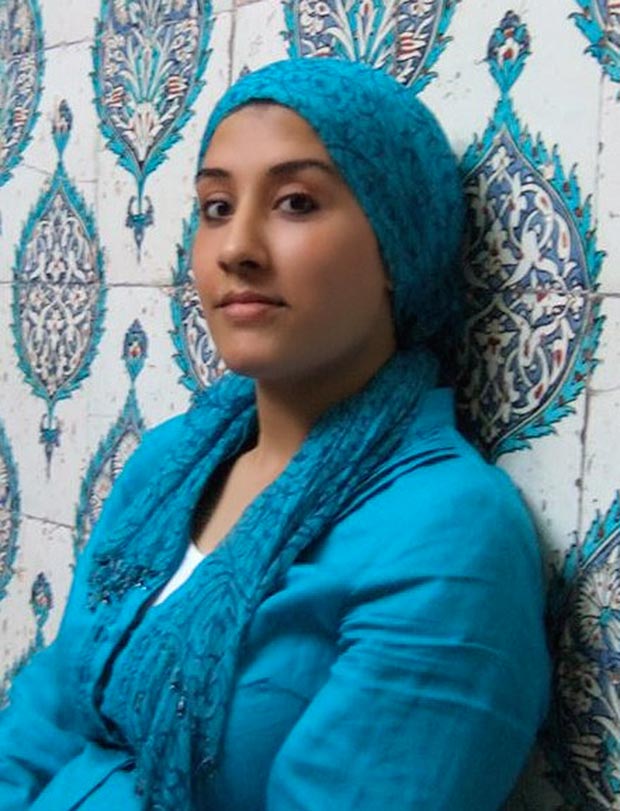 Portrait of the Artist / Courtesy of the Artist
Portrait of the Artist / Courtesy of the Artist
I have always been attracted to abstract geometric art. Before I did my Master’s in Islamic Art, I was very much influenced by the work of Bridget Riley, Agnes Martin, Mark Rothko, Richard Anuszkiewicz, Victor Vasarely and Josef Albers. At that time, my work was based upon underlying grid patterns drawn meticulously with rulers. Even then, I loved Islamic geometry and I attempted to draw some of the simpler construction drawings based on the images from the famous geometry book by Jules Bourgoin. I came across the graduate course at the Prince’s School almost by accident, and instantly knew it was something I wanted to do. The course teaches geometry with the use of compasses and this is much more natural and easy than using rulers or measurement. The course also gives an overview of the philosophical ideas and reasoning behind traditional Islamic art, and for me, the geometry classes taught by Keith Critchlow and Paul Marchant were exceptional. The degree course is an intensive two-year period of study and definitely not for the faint hearted; at the end, however, students have received a comprehensive grounding in essential techniques.
 Zarah Hussain / Blue Hexagon, Handasah series, watercolour, 15x17 cm, 2004 / Courtesy of the Artist
Zarah Hussain / Blue Hexagon, Handasah series, watercolour, 15x17 cm, 2004 / Courtesy of the Artist
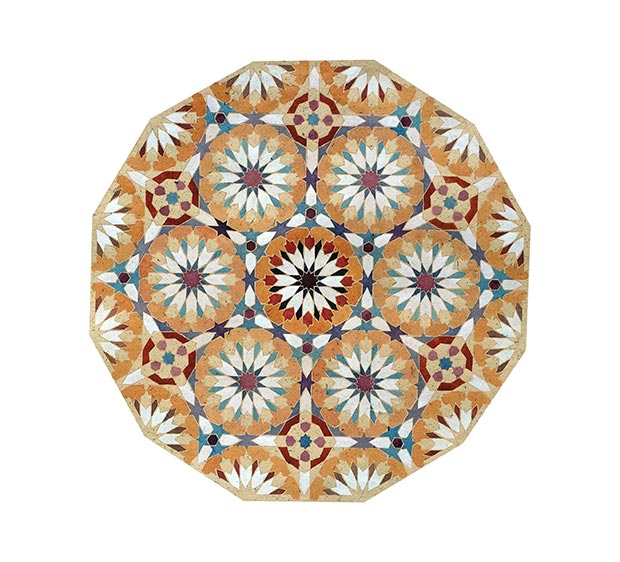 Zarah Hussain / Radiance, Handasah series, watercolour, 50 cm diameter, 2004 / Courtesy of the Artist
Zarah Hussain / Radiance, Handasah series, watercolour, 50 cm diameter, 2004 / Courtesy of the Artist
Making computer animation is a very interesting experience and, whilst working on my second animation in 2010, the computer programming became part of the artwork. With the help of the programmer, I established the rules for the animation and gave the computer instructions –in the form of programming— on how to proceed, sometimes by picking random number sequences and/or choosing colour sequences. There is a very interesting relationship between generative, computer-programmed art and Islamic art starting with the simple fact that in both patterns and numbers underlie everything. In my Araam animation, the variables are configured in such a way that every geometric shape has been designed to navigate and change colour in a completely random order so that you never see the shapes orbit or change colour in the same way at the same time. So if the animation was switched on ten computers at the same time, after about ten seconds, it would look different on every computer screen. The piece explores randomness and the philosophical idea that the universe is the same, but paradoxically is also constantly changing.
The Araam series of painting developed at the same time that I was working on the animation, and I think it was this process that led to the shift away from the more traditional work to the pieces that are meant to be more multi-dimensional, more complex and a distinct move away from tradition.
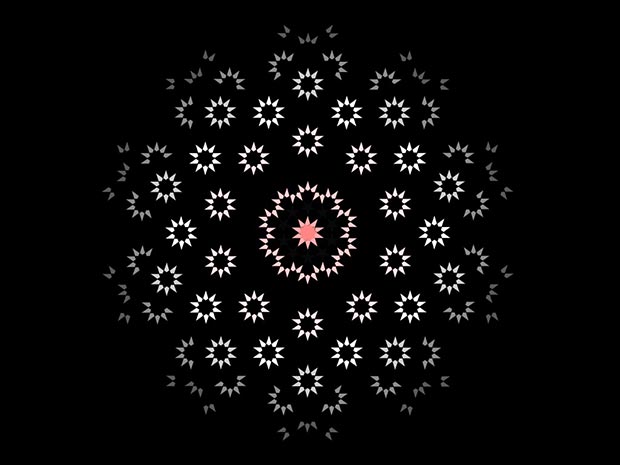 Zarah Hussain / White, still from animation projection “Beauty of Abstractionâ€, 2006 / Courtesy of the Artist
Zarah Hussain / White, still from animation projection “Beauty of Abstractionâ€, 2006 / Courtesy of the Artist
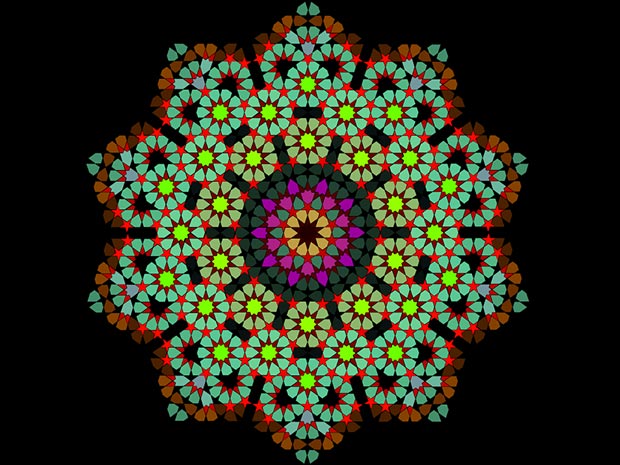 Zarah Hussain / Blue Purple, still from animation projection “Beauty of Abstractionâ€, 2006 / Courtesy of the Artist
Zarah Hussain / Blue Purple, still from animation projection “Beauty of Abstractionâ€, 2006 / Courtesy of the Artist
My sculptural work retains geometric precision and harmony. However, the addition of the third dimension enables an expansion of focus and possibility. In particular, I am concerned with how light refracts from reflective surfaces and how shadow and the interplay of light and dark create new patterns within sculptural arrangements.
Although the work itself is based on a foundation of regular numerical grids and sub-grids, these are not immediately apparent. The shadow patterns that emerge with the changing light create degrees of subtlety. Working with sculpture feels very natural to me and I am enjoying the challenges of learning new methods and processes. Most of the work in my solo show next year will be three-dimensional.
 Zarah Hussain / Hexagonal Grid & Subgrid I, wood, gesso, oil paint, 180x150 cm, 2012 / Courtesy of the Artist
Zarah Hussain / Hexagonal Grid & Subgrid I, wood, gesso, oil paint, 180x150 cm, 2012 / Courtesy of the Artist
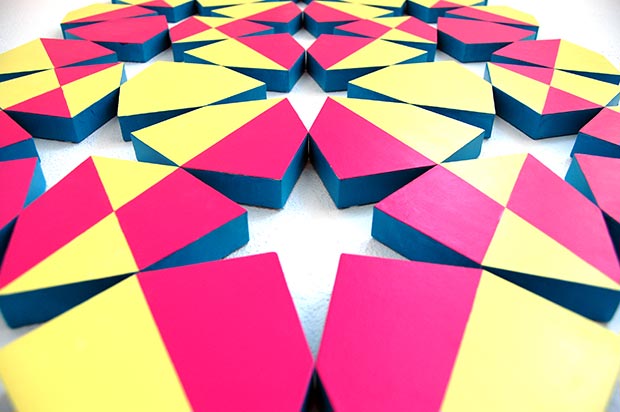 Zarah Hussain / Hexagonal Grid & Subgrid I, detail, wood, gesso, oil paint, 180x150 cm, 2012 / Courtesy of the Artist
Zarah Hussain / Hexagonal Grid & Subgrid I, detail, wood, gesso, oil paint, 180x150 cm, 2012 / Courtesy of the Artist
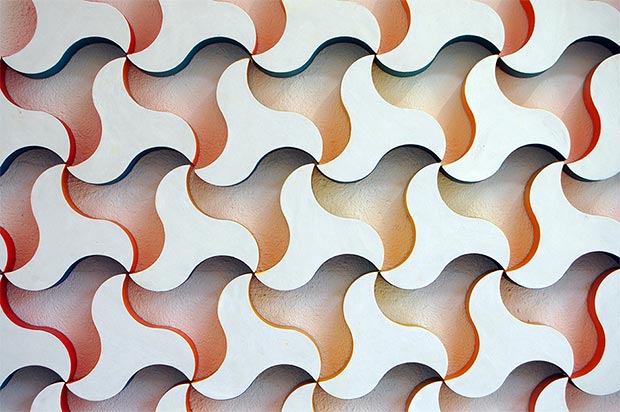 Zarah Hussain / Isometric Wave, wood, gesso, oil Paint, 180 x 150 cm, 2012 / Courtesy of the Artist
Zarah Hussain / Isometric Wave, wood, gesso, oil Paint, 180 x 150 cm, 2012 / Courtesy of the Artist
 Zarah Hussain / Isometric Wave, detail, wood, gesso, oil Paint, 180 x 150 cm, 2012 / Courtesy of the Artist
Zarah Hussain / Isometric Wave, detail, wood, gesso, oil Paint, 180 x 150 cm, 2012 / Courtesy of the Artist
I love working on public art commissions. Most of the time, I work by myself in a studio and this can be very isolating, and so the opportunity to work with the community or to collaborate with other designers and artists is brilliant. With the design of public art, as an artist, you are responding to a need or a brief and you have to design something that will work in a public space, adhere to health and safety requirements and still make something that works aesthetically and fits into the context of its local environment. With the hospital waiting room, there was definitely a need to make the work immersive, contemplative and visually interesting from any point in the room, which was a very large and busy waiting area. The feedback from staff and patients has been really positive and the works really have transformed the space.
In contrast to this, I recently finished a public art shutter project in Barking, funded by the Outer London Fund and the Mayor of London, and the aim of this project was very different. We were working on regenerating the area and making the streets feel safer, particularly at night. The aim was to brighten up the town centre with the use of bright, bold and colourful pattern. At the same time, I had to liaise extensively with the shop owners and the local community to finish with a project that had artistic integrity and also met the needs of the shop owners.
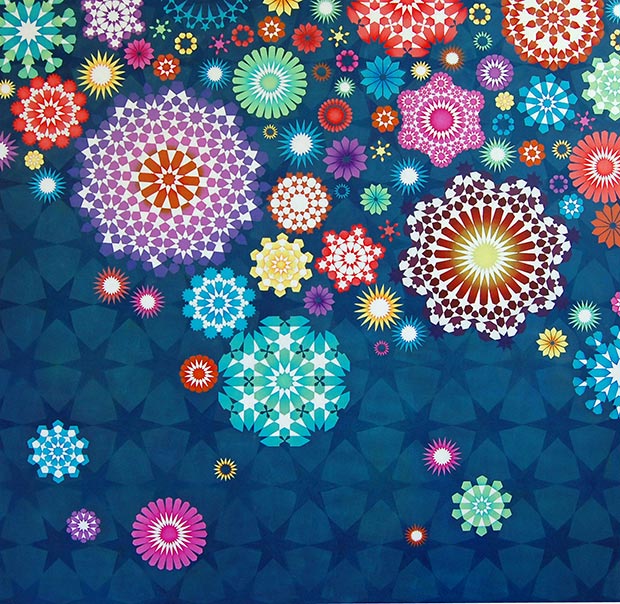 Zarah Hussain / Desert Night Sky, oil on gesso, 150 x 150 cm, 2012 / Courtesy of the Artist
Zarah Hussain / Desert Night Sky, oil on gesso, 150 x 150 cm, 2012 / Courtesy of the Artist
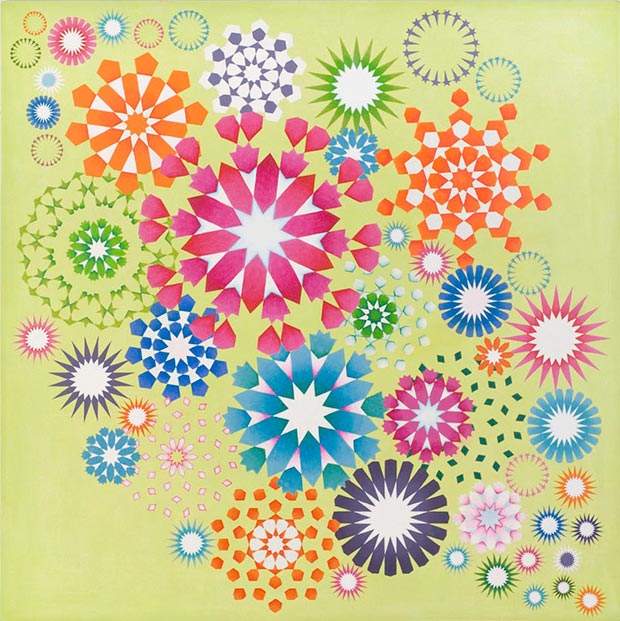 Zarah Hussain / Green Composition, oil on gesso panel, 110 x 110 cm, 2010 / Courtesy of the Artist
Zarah Hussain / Green Composition, oil on gesso panel, 110 x 110 cm, 2010 / Courtesy of the Artist
I have a few proposals that I’m working on at the moment to further develop my animation. I am very interested in projecting animation outdoors as site-specific installations.
The new exhibition in Birmingham planned for next summer is based on the science of complexity. Complexity is an interdisciplinary field of research that seeks to explain how relatively simple entities organise themselves to create complex and sometimes very intricate, interacting systems. The new works will be focused on the idea of patterns within patterns, and I want to visually demonstrate how everything we see outwardly rests on an unseen and subtle ordering. Most of the works will be three-dimensional wall based sculptures.
Comments
Add a comment